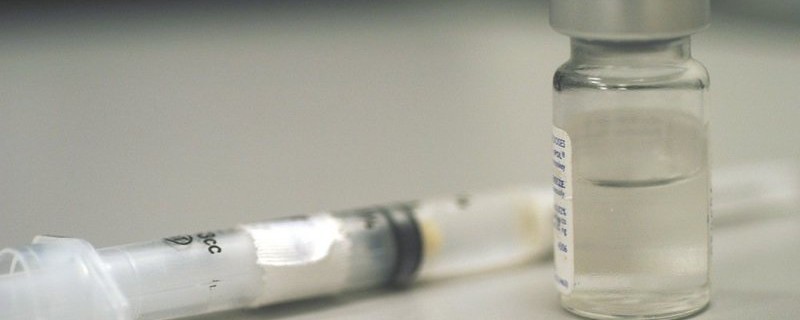
Cell Based Influenza Vaccines – Are eggs finally on the way out?
With initial data from the 2017-2018 flu season indicating around 20% better protection from the cell culture manufactured Flucelvax flu vaccine, will the industry begin to move away from eggs and toward cell based influenza vaccines?
Seven years ago I wrote an article called, “Is Egg-based vaccine manufacturing on its way out”. Since then there have been two cell based influenza vaccines approved for use in the United States, Flucelvax manufactured in MDCK cells by Seqirus and FluBlok manufactured in insect cells from Sanofi. However, the vast majority of the vaccines administered in the United States still use egg-based manufacturing. This trend may change in coming years, as there has been increasing interest in moving from egg-based vaccine manufacturing to cell culture-based methods. Cell based vaccine manufacturing is quicker, efficiently scalable and offers more control over the manufacturing environment. There is also the potential for fewer virus mutations and thus a more effective vaccine.
When we look at the 2017-2018 flu season, which has been very severe, we see the reason why fewer virus mutations is so important. In a recent STAT article, “Flu vaccine grown without eggs provided measurably better protection this season, FDA says” the FDA’s Commissioner, Dr. Scott Gottlieb, stated that “The data aren’t final yet, but I’m comfortable saying that I think it’s going to be about 20 percent improved efficacy for the cell-based vaccine relative to the egg-based vaccines”. The simple explanation for this disparity is that influenza viruses may adapt to grow in eggs and with this adaptation can come mutations that render the vaccine less effective.
The problem of mutations impacting effectiveness of the influenza vaccine is not new, in fact a growing number of studies have demonstrated this. In March 2014, a study published in PLOS, “Low 2012–13 Influenza Vaccine Effectiveness Associated with Mutation in the Egg-Adapted H3N2 Vaccine Strain Not Antigenic Drift in Circulating Viruses,” found that “Influenza vaccine effectiveness (VE) is generally interpreted in the context of vaccine match/mismatch to circulating strains with evolutionary drift in the latter invoked to explain reduced protection. During the 2012–13 season, however, detailed genotypic and phenotypic characterization shows that low VE was instead related to mutations in the egg-adapted H3N2 vaccine strain rather than antigenic drift in circulating viruses.” Again in November 2017, a study published in PNAS, “Contemporary H3N2 influenza viruses have a glycosylation site that alters binding of antibodies elicited by egg-adapted vaccine strains,” proposed that “differences in glycosylation between H3N2 egg-adapted vaccines and circulating strains likely contributed to reduced vaccine effectiveness during the 2016–2017 influenza season.”
So why is egg-based manufacturing still so prevalent?
I think that the easy answer is that there is a long track record of manufacturing in eggs and it is an inexpensive manufacturing system. Since the technology was developed in the 1950’s egg-based vaccine manufacturing has been used to manufacture vaccines against influenza, mumps, rubella and others. It would take a major effort and incentive to move entirely to cell based influenza vaccine manufacturing.
Universal Flu Vaccine
Another point that some make is that the real goal should be a universal flu vaccine. A universal influenza vaccine would eliminate the need for seasonal flu vaccines by attacking a part of the influenza virus that doesn’t mutate or change with different strains. If this type of vaccine is achieved it would also effectively end the challenge of predicting which strains will be prevalent for any given flu season, which is another cause of less effective flu vaccines. The goal would also be to effectively combat new mutations and pandemic causing flu viruses. To further this effort, Bill Gates announced in April that the Gates foundation would be providing up to $12 million dollars toward advancing a universal flu vaccine.
One company working on a universal flu vaccine is BiondVax. Last month they announced that they have begun enrolling a Phase 2 clinical trial of their universal flu vaccine (M-001)in the US. The vaccine is scheduled to begin Phase 3 clinical trials in Europe as well. BioindVax’s approach uses a combination of conserved epitopes. On their website, BiondVax describes their approach. “The “conserved epitopes” are common to most human flu virus strains regardless of their antigenic drift and shifts. These conserved epitopes are used to activate the human immune system in a long-lasting and effective manner against known and future strains of the influenza virus. These conserved epitopes are restricted to the viral structure and are not shared by any human protein, thus they are unlikely to induce an autoimmune phenomenon.”
A group of scientists at UCLA are also working on a universal flu vaccine. Their work was published in the journal Science, “Genome-wide identification of interferon-sensitive mutations enables influenza vaccine design”. In the study, they describe how they were able to use genomics to identify and eliminate the influenza virus’ interferon (IFN) modulating functions genome-wide while still maintaining virus replication fitness. Study authors incorporated eight IFN-sensitive mutations, to create a “hyper–interferon-sensitive (HIS) virus as a vaccine candidate”. The interferons are key to the body’s immune response to the virus in both killing the virus quickly and providing an adaptive immune response, which provides long-lasting protection against the virus. It has been tested in animals and was found to be safe and elicited strong immune responses.
Summary
Whether it is improving seasonal vaccines by using cell culture based methods or finding a universal flu vaccine, it is clear that improving our response to the influenza virus is critical to public health. We can see the impact of a severe flu season, even when the correct strains are selected, this does not even begin to touch on what would happen in the case of new strain or pandemic. As many experts in this field have stated, a pandemic is a case of when, not if.